
| Parasitic interactions: Parasitoids |
| Diptera, Bombyliidae |
|
The large family Bombyliidae encompasses some 5,000 species, most of which are ectoparasitoids as larvae. They mostly attack hosts found in burrows or nests. The first instar larvae actively searches for a host, then they transform into a sessile parasitoid, which attacks when the host has grown into amature larvae or pupae. Females may hover before nest openings of various hosts, during which they shoot their eggs into the nest opening. Before oviposition, females of the 'higher bee flies' tap with the tip of their abdomen onto dirt or saw dust, and the eggs are coated by this material. The function of this behaviour is not fully understood, but it may protect dessication or hide the smell of the eggs. The large family is divided into some 16 subfamilies. |
| Anthrax anhrax | |||
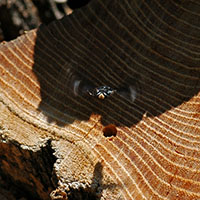
|
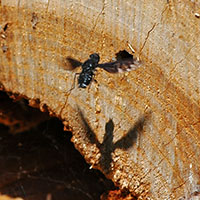
|
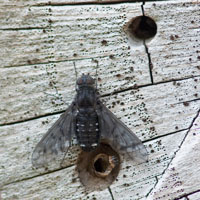
|
|
|
Female inspecting and hovering in front of opening in wood. The brown tip of the abdomen are the modified sclerites of the eighth segment, with which the fly picks up dirt. |
Freshly emerged fly, with pupal skin. Host was the mason bee, Osmia bicornis. |
||
| Anthrax spec. | |
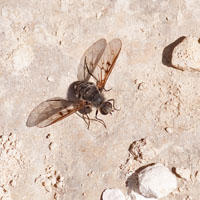
|
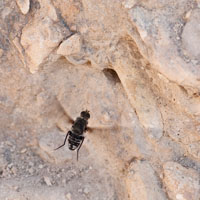
|
|
'Dirt dancing' female (left) and female hovering before bee nest for oviposition (right). |
|
| More 'dirt dancing' Bombylids |
| Bombylius major | Villa cf. hottentotta |
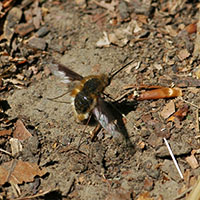
|
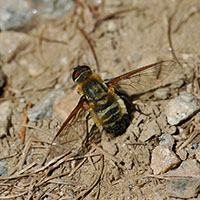
|
| Lomatia spec. | |
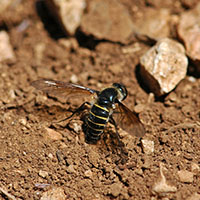
|
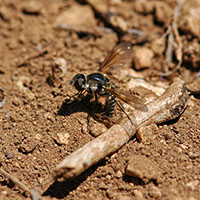
|
| An anthology of Bombyliidae |
| Usiinae | |
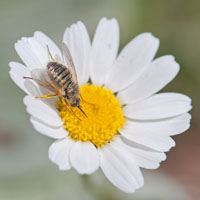
|
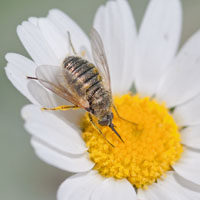
|
| Phthiriinae | ||
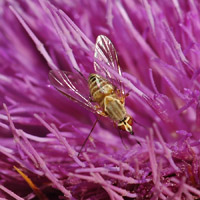
|
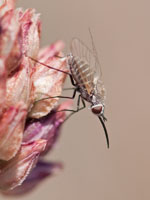
|
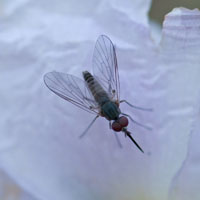
|
| Bombyliinae | ||
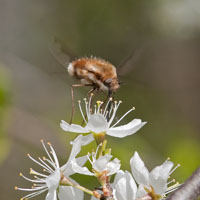
|
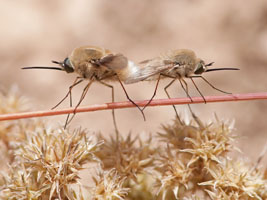
|
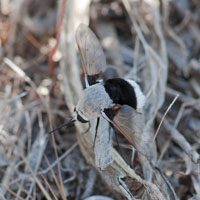
|
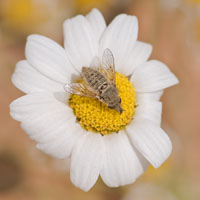
|
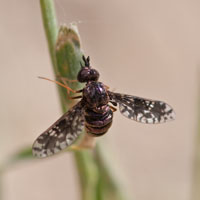
|
| Cythereinae | ||
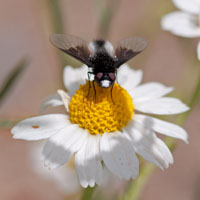
|
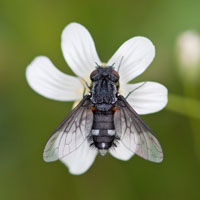
|
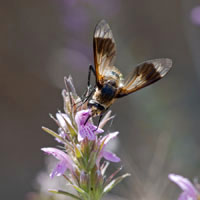
|
| Ecliminae | Toxophorinae |
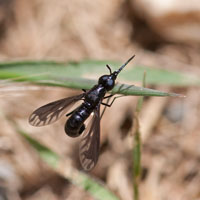
|
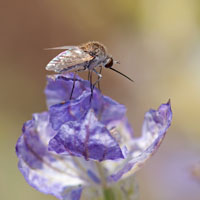
|
| Anthracinae | ||
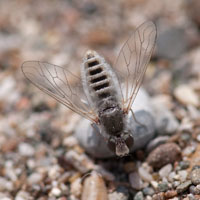
|
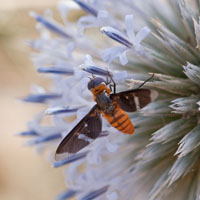
|

|
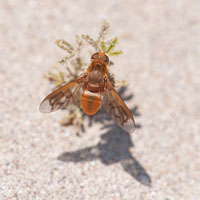
|
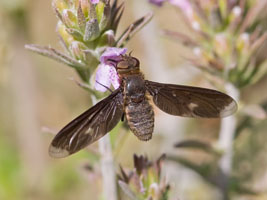
|
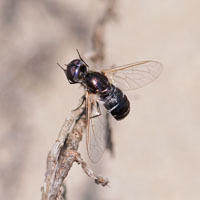
|